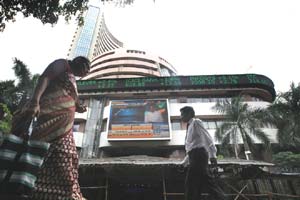For the group of 47 large cap companies in the list, the profits went up by 1.9 per cent despite their revenues falling by 8.6 per cent. This came as the raw material expenditure for the group of companies fell sharply by 24 per cent during the quarter. This group however also witnessed a jump in the interest expense by 18.7 per cent during the quarter as the companies continued to reel under high debt. For the group of 74 mid cap companies (in the list) classified as those having market capitalisation between Rs 5,000 crore and Rs 25,000 crore, while the net sales grew by almost 2 per cent, the net profit jumped 36 per cent from Rs 5,803 crore in the quarter ended June 2014 to Rs 7,902 crore in the quarter ended June 2015.
Even the small cap companies, classified as those having a market cap of less than Rs 5,000 crore, posted better performance in terms of revenue growth. The net sales for the group of 90 small cap companies that announced their results and are part of BSE 500, rose by a healthy 8.4 per cent while the net profit rose marginally by 5.4 per cent during the quarter. Even on the interest expense front, it can be seen that the group of large cap companies witnessed the maximum rise during the quarter. The interest expense for the large cap companies rose by 18.7 per cent from Rs 4,197 crore to Rs 4,984 crore. In comparison, the group of mid cap companies in the listed saw their interest expenditure decline and the small cap companies saw it marginally rise by 5.8 per cent.
Risk of earning downgrade dips
While the brokerages were not expecting much from the India Inc in terms of their quarterly results for the last concluded quarter there has been no improvement in broad growth parameters that include — credit growth, NPAs with banks, volume pick up in cement or consumer staples and also order inflows for companies. This is leading to some research houses downgrading their earnings growth targets.
Sectors leading and lagging
Though the government expenditure on infrastructure development is expected to rise, the capital goods, cement and real estate sectors continued to remain under stress and the companies operating within them witnessed a decline in their profitability. Order inflow of some of the prominent engineering and capital goods players witnessed y-o-y drop in the quarter. While L&T’s order book stood at a healthy Rs 2.4 lakh crore, due to lack of pick up in the Metallurgical & Material Handling and heavy engineering segments, the capital goods major reported a 21 per cent decline in the order inflow and a 37 per cent drop in net quarterly profit compared to last year.
The silver lining came in the form of automobile sector as both the two wheeler and the passenger car segments posted a significant rise in their topline and bottomline growth. While the net sales for the group of firms rose by 11 per cent, the net profit jumped 42 per cent. Maruti, Eicher Motors, Bajaj Auto and Hero MotoCorp reported strong numbers. Pharma continued to outperform but FMCG firms witnessed flat revenue growth and a marginal rise in the net profit. Although players including Dabur and Godrej Consumer managed to report strong volume growth, Hindustan Unilever reported a muted volume growth of 6 per cent despite passing on the benefit of lower commodity prices in terms of price cuts in soaps and personal product categories.
For the banking sector the asset quality remains a concern. Some big PSBs like Punjab National Bank, Bank Of India and Union Bank reported a double digit drop in their profit compared to last year. With a slowdown in uptick of non-food credit, even NBFCs showed higher asset quality stress.
